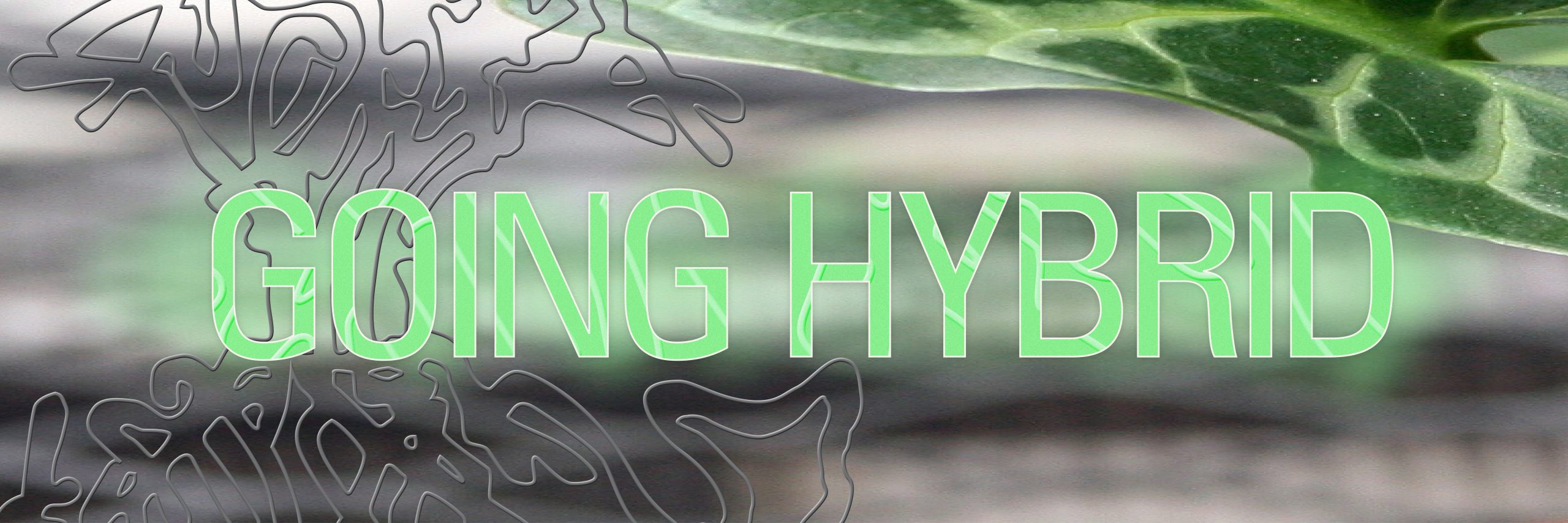Starting from research questions surrounding the inherently ephemeral nature of archives that live on the internet, this expert session looked at the structure and classification aspect of an online archive, the care and maintenance it requires, as well as which parameters for curating content lie at the forefront of a truly accessible archive.
The session takes place on the mezzanine of Framer Framed which is an open space with a lot of natural light, it’s cold and even snowing outside as we settle into our seats. We are all seated at a long table with the facilitators at one end operating the presentation and the participants filling all the seats at the table, facing the three facilitators. Sofia Boschat-Thorez, an artist-researcher and educator with a focus on knowledge organization systems, opens up the session with introductions. She is joining us from Varia and Willem de Kooning Academy.
The session is facilitated by Sofia, along with Artemis Gryllaki and Karl Moubarak from Hackers & Designers.
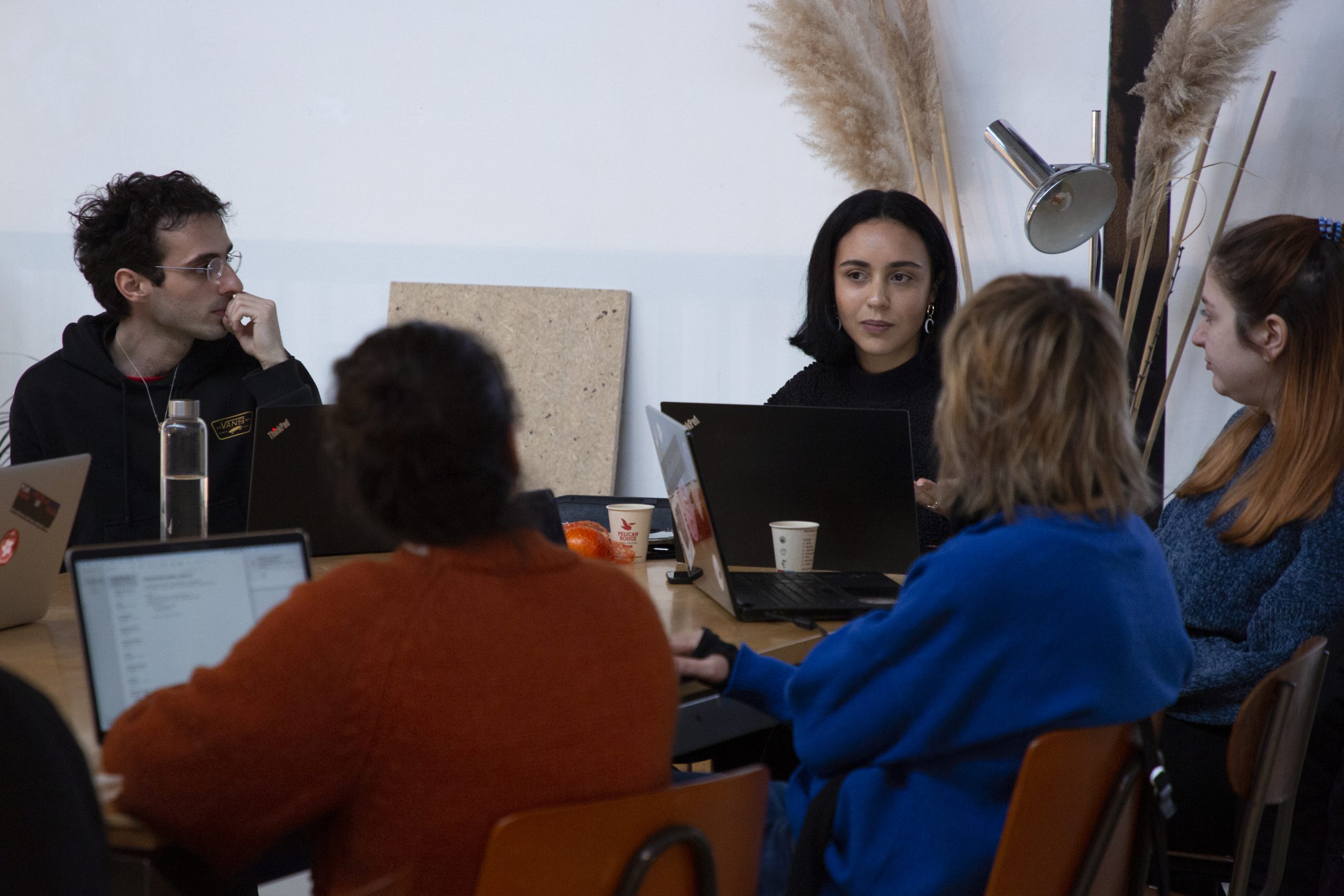
Expert Session facilitators Karl, Sofia and Artemis
Attendees around the table introduce themselves and their interest in the project one by one. Many of those in attendance work in or with archiving, right away it is clear there is a lot of interest and familiarity with the subject within this session.
The facilitators explain that the research stems from the hybridity encouraged by the pandemic, the project began during a transitory moment of the pandemic when events were not fully taking place in person or online but had transitioned from solely online to hybrid settings. This is when the importance of digital archiving became increasingly clear, there was a necessity to be working primarily online. This created a production and accumulation of digital material that needed to be organized.
Due to this accumulation of hybrid material, the question became: how does this material need to be organized, what do we do with it and how do we think of accessibility in regards to it? We have been given access to a temporality that is more accelerated so new approaches to online archives and what becomes of them over the long term are necessary. Online archives are often lost when maintenance is overlooked, due to a lack of funding which makes it more complicated to remain focused on.
An example Karl shares with us of the issues related to the lack of maintenance/resources for online archives is the website Queering the Map, which “is a community generated counter-mapping platform for digitally archiving LGBTQ2IA+ experience in relation to physical space.” When I search Queering the Map on Google, among the suggested results are “queering the map not working reddit”, “queering the map how long does it take” and “queering the map not loading.” Karl explains that the site has zero maintainers and only one person moderating it. It can take up to a year for new submissions to be published on the site. This exemplifies the temporality of digital archives, the concept of the living archive simultaneously existing as a dying archive. There are many digital archives that remain accessible but are no longer growing or being modified, situating them in-between living and dead, zombie archives.
The participants of the project detailed in the expert session were Margarita Osipian (The Hmm-platform for internet cultures), Angelique Spaninks (MU-Hybrid Art Space), Simon and Artemis, Karl, Laurence Scherz and Sofia.
Sofia, Karl and Artemis explain to us that their aim in the project was “not to reach a technical solution but to use this moment to create a proposal to implement reflections and interests.”
To achieve the aim of creating a proposal to implement reflections and interests to address living/dying archives the participants engaged in conversations, meetings and 1-2 day sprints of prototyping, transcription, coding and editing. They reflected on what works and doesn’t and rearranged the path accordingly.
“It was a wild ride to find ways to organize and set a path and rhythm together with people from all different backgrounds and skillsets.”
MU Hybrid Art House’s event archive and exhibitions were used as a vehicle for all of their experiments. MU is considered the problem owner for the project and has 25 years worth of events archived. MU is located in Eindhoven, The Netherlands and describes itself as “all about art in the broadest sense of the word. Together with mainly young makers and a broad, international audience, MU defines the liminal space between ‘what art is and what art can be.”
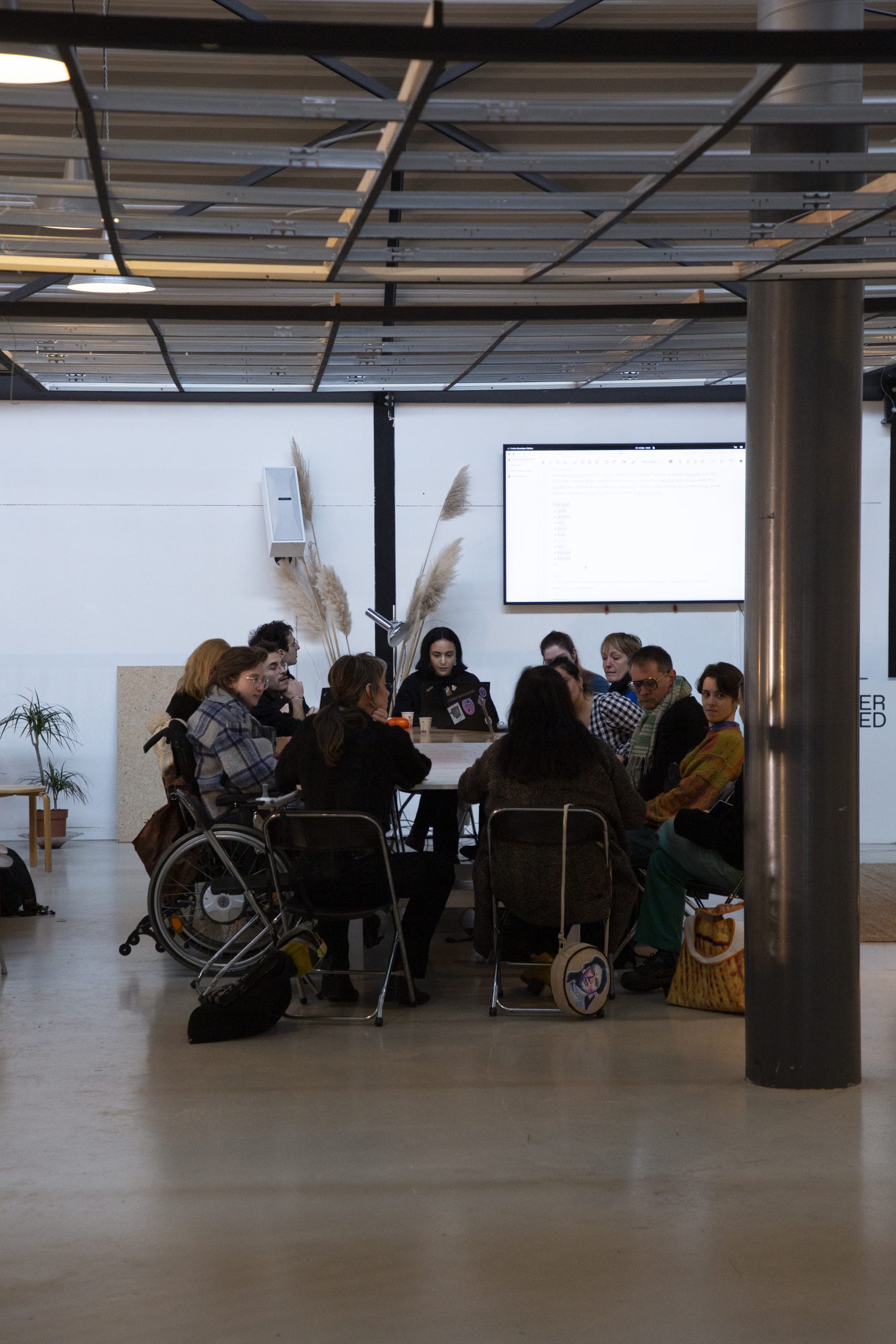
With three facilitators speaking to the participants as well as to each other, the session successfully feels more like a sharing of ideas rather than a lecture. The conversation shifts often and the focus goes from introducing the methods and aim of the project to discussing Eric Kuitenberg’s work on the relationship between memory and archives.
Kuitenberg explores the connection between living memories and digital archives in his essay Captured Alive: On Living Memory and Digital Archives. Due to memory existing in certain cultural contexts and situated in the biological body of those that hold the memories, different elements of an archive will recontextualize those memories. Kuitenberg writes “Memories evolve, mutate, blur, and are continuously re-contextualised by new experiences. Sometimes memories are forgotten, or are apparently forgotten, only to re-emerge at the most unexpected moment.”
For the team the question becomes “How could an archive also allow for recontextualizing within itself of one event through time?” The aim is to come up with a system for an archive that inspires fluidity of memory. This archive would need to evolve in relation to the different actors that are interacting with it. The relationship between the memory and the archival material is being recreated through time, an ever evolving archive.
It is at this point in the discussion that the participants are asked to share their thoughts, this begins a discussion on what can be considered a dying archive. The question of the way a digital archive can be adapted to incorporate living memories is unfortunately passed over for the time being.
One participant asks “can archives sleep?” which leads to a discussion about dormant and active phases of an archive and how this can relate to it being an undead (zombie) archive. The idea is that a zombie archive is neither living or dead. Its accessibility makes it undead, but it cannot be modified or reactivated. There is also the question of retired archives, which would require maintenance in order to remain living. The mention of Erica Scourti’s project Dark Archives opens dialogue about the metadata of an archive being the shell or the trace of an archive, contributing to its undead status.
One attendee finds the metaphor of life and death applied to an archive absurd, stating “it’s just there”, the heated response from another participant is that this isn’t the case since it is being used. Another point of contention is the relationship between maintenance and preservation and whether an archive is living or dying. Karl suggests that maintenance is for the dying archive whereas preservation is for the living archive. Carolina, one of the expert session attendees, proposes that an archive itself is a signifier of death and that preservation can be considered a material or passive activity whereas a living archive is one where preservation is more active.
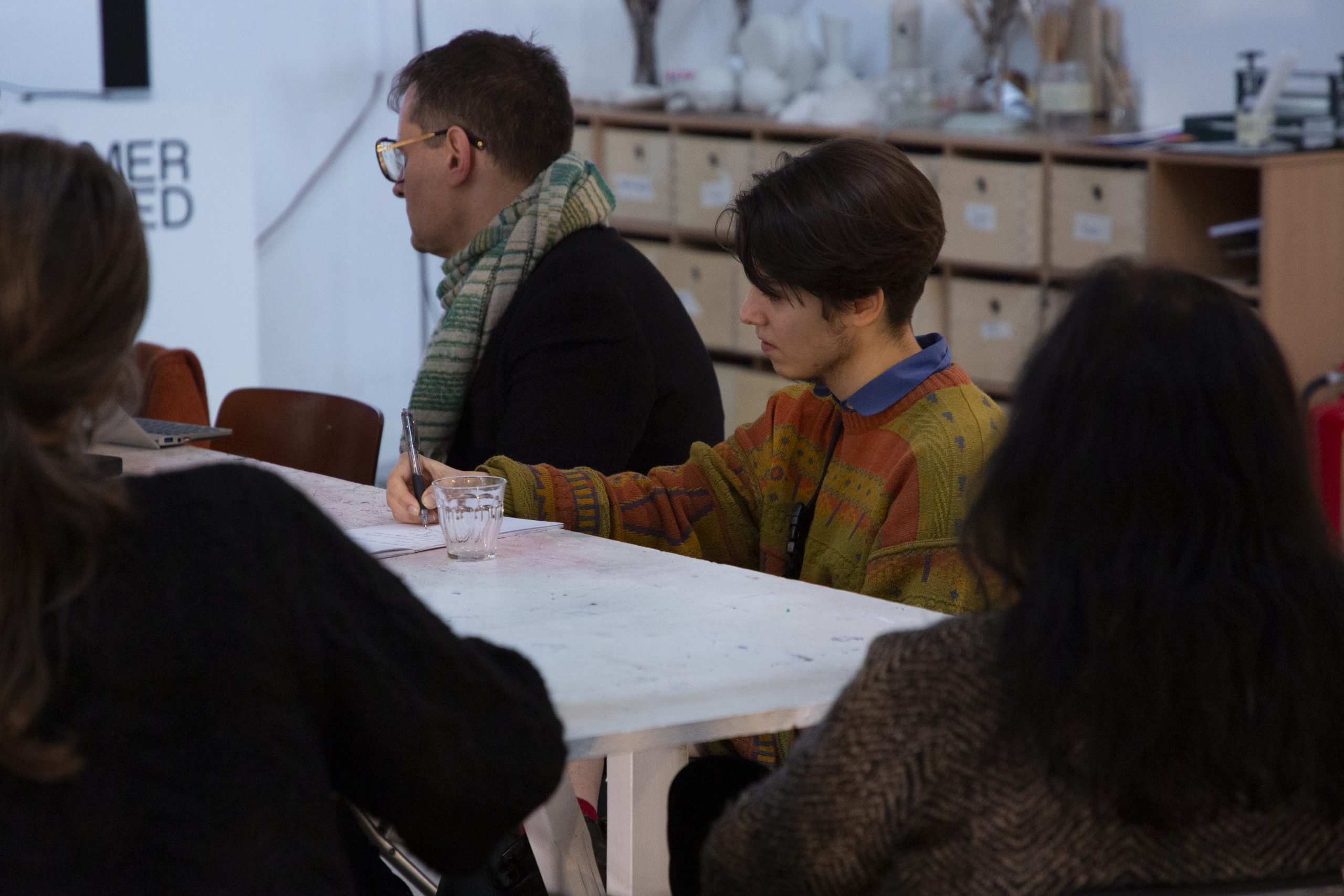
The conversation shifts to the question of navigating a digital archive, how does one’s path change over time and how do people get oriented. This introduces the question of classification and the importance of vocabulary. They state that a mode of classification is a way to understand and represent the world and that it is hard to find ways to work beyond it. How does one escape fixed classification? To play with classification may mean to play with structure. Online archives can be organized by the vernacular mentioned in the content, this isn’t possible in the same way for a physical archive and allows for the reactivation of the content within different contexts. What exists in the archive is reactivated and the material is put into relation with each other digitally.
Due to a person’s subjectivity changing over time, tags might shift and classifications become quite loose. “There is something quite slippery about having to tag and annotate items in an archive.” Something as simple as using dashes differently or using different spelling can affect the way archival material is tagged and subsequently classified. The subjectivity of a person has an impact, they have their own history and ways of writing and therefore the way the archive is presented will be impacted.
The challenge then becomes, what choices does the team want to make with tags (such as vocabulary) that can break from the normative and instead be rooted in a small group of people. Perhaps as an attempt for human influencing being made obvious, searching for a mode of classifying that will make subjectivity appear at the forefront. The imperatives are different when you are a part of an institution that requires other institutions to understand the way you are classifying your content. The team asks itself “how can we shift from an authoritative prefixed navigation logic and open up the structuring process to the viewers?” How can they combat the tyranny of structure in digitization when they are inevitably locked in clear delimiters for tags?
It’s at this point that a participant brings up what they refer to as the elephant in the room, the fact that digital archivists have to rely on database centers. The team responds that their aim is for the work to be done without databases as much as possible, this is conceivable because they are operating as a smaller institution and therefore have more time and resources for experimentation, unlike bigger institutions.
The conversation shifts back to classification, what methods and tools can the team utilize to open up the structuring process to the viewers. The facilitators suggest that if they “can reverse, bring subjective method, viewers can bring their own ideas about what happened” and ask if this something that is also important to keep as a knowledge or a memory.
Finally, the facilitators explain more in depth how their project with the MU Hybrid Art House materialized and what approaches were preferred. With the scrapping of MU’s existing archive they bypass the database and work on what they playfully call MUmories. With their bootlegged archive of MU they have the code and content and are able to then enter it in different ways. They played with the content by arranging it as image only, tight and as a wordcloud. They explored reclassifying the archive as what is there as material, what can be used as digital material. Looking without text by arranging it as image only can bring up new memories or questions.
At one point during the session Karl as well as many in attendance take notice that the mezzanine is incredibly cold, this is then somewhat rectified by a space heater and hot tea brought over by a kind soul from Framer Framed. However, the temperature does seem to have an impact on the energy levels in the room.
By talking through the MU archive the topic of the precarity and fluidity of memory resurfaces within the discussion. The team recognized that when remembering different events some may experience gaps in memory, consequently, existing memories of these events may be scattered throughout the various people who attended the event and those experiences might not have been documented. They wanted to find a way to gather and attach those individual accounts of an event to different items in the archive in order to progressively remove the need for more factual information such as pictures and titles. The team explains that they wanted to focus more on the attendee’s takeaways rather than objective facts. They wanted the selection of what is considered important to not be done by the institution but by the people experiencing the event. The aspect of processing memory becomes significant because the information that is collected would then be based on what is memorable to the individual.
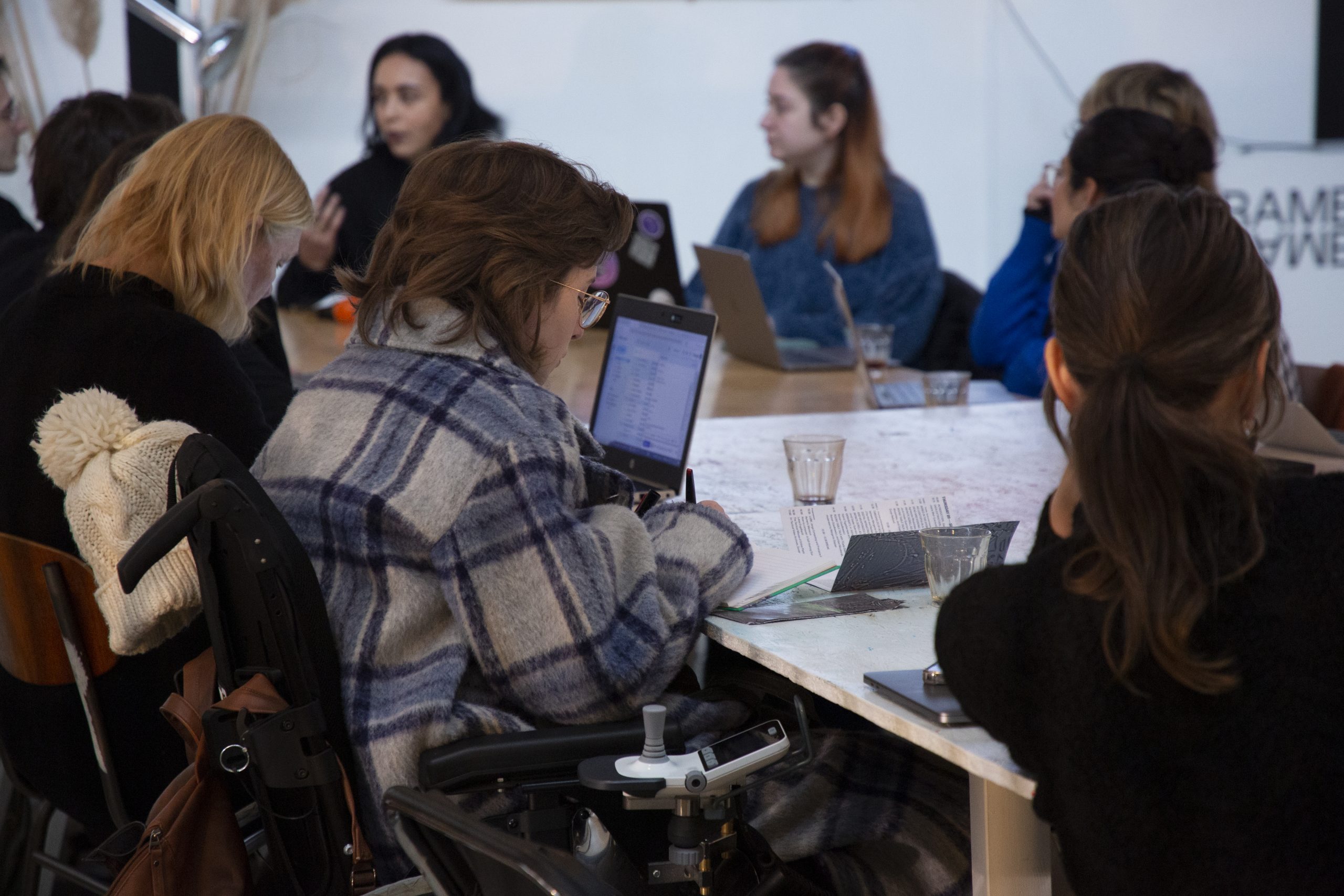
According to Kuitenberg “the living archive required a set of tools that support and enable continuous reinterpretation of archived materials, including rich media sources such as audio and video recordings.” It makes sense then that the team decided to focus on oral testimonies. They explain that oral narration can be utilized as a response to the dying archive, when the archive starts to rot the testimonies of memories remains. This would be considered zombifying the archive, creating an undead and non-factual version of the archive. This then deserves and requires as much digital care as the traditional archive.
Once it was established that the method would be the use of oral testimonies, the team then had to start thinking about how they will work with prompting people, how to find a way for these testimonies to structure themselves and manage to have a form of order created around them. The question of methods then arises, if these testimonies would materialize as a more narrative style through storytelling. They could open up questions in a web tool to potentially invite people to anonymously contribute their memory of an event. Alternatively these testimonies can be collected during the event itself. They consider the possibility of having a digital tool and physical booth for recording your memories as well as listening to how others have experienced the event. A “shrine but don’t make it religious.”
Another consideration the team introduces is how to approach potential prompting of memories, “how do you invite people for a recollection of memory?” Is there a specific question that can activate memories? Especially since memory works in different ways for different people.
The facilitators discuss that the manual transcription of these testimonies into text can be very labour intensive, it takes both large amounts of time and human labour. While searching for a solution they landed on the software Alpha Cephei. The issue with voice recognition software is the loss of subjectivity in the transcription and editing. Additionally, The speaker’s accent can affect the way the software recognizes words.
One of the reasons oral testimonies can be interesting is the possibility for certain accounts that would speak about comparable things which could then create reach between two memories. Pathways can be made between accounts and events. With recordings they can create fragmented testimonies by playing with chopped audio and discover how to reassemble it and make it new. Carolina suggests that memories trigger other memories, the stories will build on each other as those remembering react to other people’s testimonies and not just the event itself. She adds that “audio archiving brings noise and liveliness to an archive.”
Sofia then explains that this project will require maintenance and it is unlikely to have funding to maintain over the long term. This may mean that creating this kind of structural collection of accounts is not necessarily sustainable in and of itself. However, things can be recreated from the archives and taken back into other forms. This leaves space for new relations and new things to happen.
By the end of the session the space is still feeling very cold and you get the sense that this has somewhat zapped the energy from the room. Karl, Artemis and Sofia let us know that we can check back with them in May and June when the project is further along. Once the official session has ended many attendees stay to chat in between themselves and with the facilitators. Due to the time constraint many questions were not able to be asked in the formal setting and I got the impression that they were not able to fully finish the presentation of their project, however, it is clear that the introduction of their project left many attendees interested and wanting to know more. The importance of approaching digital archiving with the fluidity of living memory in mind and creating tools to incorporate this has been made abundantly clear with the overview of the project this team has been working on.
P.S. Karl brings up his work as part of the Office of Queer Affairs at the Van Abbe Museum, the project Queering the Collection contains participatory perspectives with prompts that invite queer perspectives, he says their files continue to grow and recommends to check it out.


